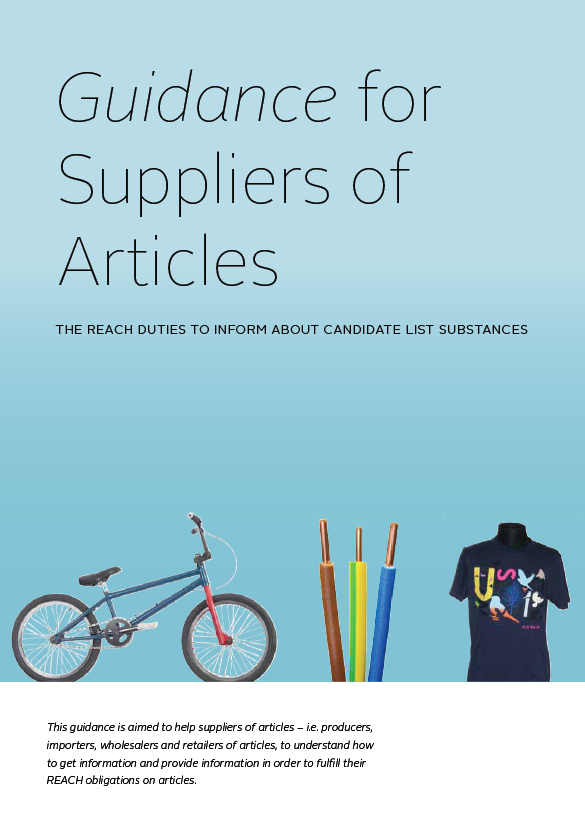Belgium, Denmark, France, Germany, Norway and Sweden authorities have issued "Guidance for Suppliers  of Articles: The REACH duties to inform about Candidate List substances" July 2013, that lays out their interpretation that
of Articles: The REACH duties to inform about Candidate List substances" July 2013, that lays out their interpretation that
ONCE AN ARTICLE, ALWAYS AN ARTICLE
Basically, this is the ROHS approach - except that instead of a handful of heavy metals, you'll have to track all 144 Candidate List chemicals and new additions every six month cycle to see if any component contains over 0.1% and 1 tonne/yr of the SVHC.
In a footnote they acknowledge that this isn't the ECHA interpretation:
"This is different from what is said in ECHA’s “Guidance on requirements for substances in articles” which is based on the Commission’s interpretation which implies that the trigger limit should be applied on the whole assembled article. In Annex 1, the differences between the approaches to apply the 0.1% trigger limit are further explained."
Regardless, these countries say it's good for companies to deal with it this way because there will likely be restrictions under the Authorization process of REACH so it will let you eliminate it ahead of time.
The guidance is nicely done and gives handy examples of how to go about figuring out what's in a product using a probability approach - chase only those components likely to contain an SVHC.
What should you do?
- It's always prudent to know what's in your products and keep track continuously of regulations that may apply to them with a combination of a good data management system and close contact with suppliers.
- From a compliance standpoint - these countries are authorized to enforce REACH and say they will use this guidance of Once an Article, Always an Article (O5A) in doing so. Since the rest of the EU is relying on the whole article approach to reporting, guaranteed there will be lawsuits.
EHS Strategies, Inc. can help.
